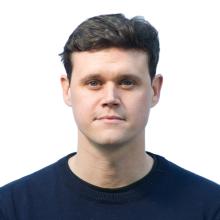La investigación del grupo en Ciencias de la Tierra tiene un enfoque multidisciplinar que abarca 1) desarrollo teórico, 2) análisis y procesamiento de datos de campo, y 3) interpretación geológica final. En esa línea, dos grandes objetivos del grupo son obtener nuevos tipos de observaciones, y también mediciones más detalladas y precisas para mejorar y hacer interpretaciones geológicas más objetivas.
Grupo de investigación
Barcelona Center for Subsurface Imaging
Personal del grupo
Responsable de grupo (IP)
 Research group leader
Research group leader
Personal Investigador Senior
 Head of Department
Head of Department





 Director
Director
 Vicedirector
Vicedirector
Información más relevante
Destacados
2018 Miembro de la "Union Fellows Programe" de la AGU (Ranero)
2019 “Premi Cuidat de Barcelona in Environmental and Earth Sciences” (Sallares & Ranero)
2020 Miembro electo de la Academia Europaea (Ranero)
Publicaciones
- 202310.1038/s43017-022-00380-y
Towards a process-based understanding of rifted continental margins
- 202310.1038/s43247-023-00705-9
Trench-parallel ridge subduction controls upper-plate structure and shallow megathrust seismogenesis along the Jalisco-Colima margin, Mexico
- 202210.1038/s41467-022-31895-z
Evidence for a developing plate boundary in the western Mediterranean
- 202110.5194/egusphere-egu21-14856
The causal link of large shallow slip, long duration and moderate shaking of the Nicaragua 1992 tsunami earthquake
- 201910.1038/s41586-019-1784-0
Upper-plate rigidity determines depth-varying rupture behaviour of megathrust earthquakes
Proyectos
Tecnologías fotónicas más rentables para la monitorización remota de la sismicidad en almacenes geológicos de zonas marinas para la transición energética
Period: from 2022 to 2025Funding entity:PN2021 -Proyectos en colaboración público-privada 2021- SUBP. EST TRANSFERENCIA CONOC-Programa Estatal para Impulsar la Investigación Científico-Técnica y su Transferencia - PEICTI 2021-2023-MRRAcronym:TREMORSRef.:CPP2021-008869Amount awarded:270783.68€Resumen:The scientific evidence of climate change has led to new energy policies with the goal of a carbon neutral economy this century. One path to decrease our carbon footprint involves strategies to increase renewable energy production. Green/Blue Hydrogen are envisioned as key players for energy-intensive sectors such as industry, road freight, shipping and aviation. Hydrogen can also store energy from excess generation of facilities like wind or solar farms. However, intermittent nature of renewable energy production requires large accumulated reserves possibly as Underground Hydrogen Storage (UHS). Although growing production of renewables is mandatory towards climate-change mitigation, scientific reports call for complementary measures where a key player is Carbon Capture and Sequestration (CCS) stored in underground geological formations.
All those storage projects will necessarily be scaled as complex multi-decadal operation with large capital investments, and their implementation will require development of novel technologies solutions, many yet untested.
TREMORS will provide a technological solution for an operational major challenge, still little appreciated in industry, but long recognised in academia. Fluid injection changes the natural state of stresses in the crust and generates earthquakes. The frequency and magnitude of the seismicity is variable and difficult to predict, but relates to the rate of fluid injection, which can be modulated with warning mechanism. Earthquake generation has four major issues that need to be mitigated for successful storage. First, natural seismicity must be studied to evaluate fault activity that might cause a large event. Second, injection might trigger slip on dormant faults. Third, even if no large events occur, induced small magnitude seismicity might compromise the integrity of the underground storage facilitating leakage. Finally, a fourth scenario is moderate induced seismicity causing social alarm. One or several of the 4 scenarios will cause project termination during planning, development or operation. To diminish risk, it appears that most storage sites will be located offshore, far from populated areas. However, offshore environments make particularly challenging to properly monitoring seismicity to be able to undertake appropriate measures to avoid a project termination. In spite of this impending need, there is no available monitoring system that properly performs the prevention service.
TREMORS combines the know-how of groups of engineers and geophysicists to build the first integral system for offshore real-time high-resolution seismic monitoring. To meet the regulatory and safety requirements, the new system represents a quantum leap compared to any system previously used for onshore seismic studies. Monitoring will combine the use of optical fibre cables as thousands of sensors buried under the seafloor, with the detection capabilities of an improved Distributed Acoustic Sensing (DAS) system, and a Big Data approach with tailored Artificial Intelligence (AI) algorithms, to detect, analyse and locate seismicity. The monitoring system will map even minuscule events that provide critical information to evaluate natural hazards during site selection and later during operation, so that the corresponding precautionary measures during injection can be emplaced, before the outbreak of a seismic crisis may compromise the storage integrity or cause social alarm.
Repsol strategic plan commits on the generation of renewable energy and to a net-zero carbon footprint for 2050. Repsol is also one of the few national and international companies with the know-how to tackle the bold enterprise of underground storage. Their leadership and coordination of TREMORS warrants a swift technological transfer of the results from a prototype to industry standard, turning a major problem into a business opportunity, and solving one of the pending issues in our path towards a carbon neutral economy.
FUENTES TSUNAMIGENICAS EN EL SUR DE LA PENINSULA IBERICA
Period: from 2022 to 2024Funding entity:PN2021 -PROY I+D PID- SUBPR. ESTATAL DE GENER. DE CONOCIMIENTO- Programa Estatal para Impulsar la Investigación Científico-Técnica y su Transferencia - PEICTI 2021-2023Ref.:PID2021-128513OA-I00Amount awarded:42000.00€ESTRUCTURA DE LA CORTEZA Y MANTO EN LAS ISLAS CANARIAS INTEGRANDO OBSERVACIONES EN EL FONDO MARINO
Period: from 2021 to 2025Funding entity:PN2020 - PROY I+D+I - PROGRAMA ESTATAL DE I+D+I ORIENTADA A LOS RETOS DE LA SOCIEDAD - PLAN ESTATAL DE INVESTIGACIÓN CIENTÍFICA Y TÉCNICA Y DE INNOVACIÓN 2017-2020Ref.:PID2020-114682RB-C31Amount awarded:135000.00€SISMICIDAD ASOCIADA A LA EXTRACCION Y ALMACENAMIENTO DE HIDROCARBUROS EN ESPAÑA
Period: from 2018 to 2020Funding entity:PN2017 - PROY I+D+I - PROGRAMA ESTATAL DE I+D+I ORIENTADA A LOS RETOS DE LA SOCIEDAD - PLAN ESTATAL DE INVESTIGACIÓN CIENTÍFICA Y TÉCNICA Y DE INNOVACIÓN 2013-2016Ref.:CGL2017-88864-RAmount awarded:45100.00€FORMACION DE LOS DOMINIOS GEOLOGICOS EN EL MARGEN OESTE DE IBERIA Y LA REACTIVACION DE SUS LIMITES TECTONICOS
Period: from 2016 to 2020Funding entity:PN2015 - PROY I+D+I - PROGRAMA ESTATAL DE I+D+I ORIENTADA A LOS RETOS DE LA SOCIEDAD - PLAN ESTATAL DE INVESTIGACIÓN CIENTÍFICA Y TÉCNICA Y DE INNOVACIÓN 2013-2016Ref.:CTM2015-71766-RAmount awarded:172000.00€
Contratos
-
SISMO-5 EBRO BASIN -Regional Seismicity Evaluation Passive Seismic Data Acquisition - 2023.
Period: from 2023 to 2025Funding company: -
MEDUSA -2 Mediterranean Underwater Seafloor Analysis
Period: from 2024 to 2025Funding company: -
PROYECTO: MEDUSA - I Mediterranean Underwater Seafloor Analysis
Period: from 2022 to 2024Funding company: -
Proyecto: SISMO 2 - Estudio de Sismicidad Base & Monitorización
Period: from 2021 to 2023Funding company: -
Proyecto SISMO - Estudio de la Sismicidad Base & Monitorización
Period: from 2021 to 2023Funding company: